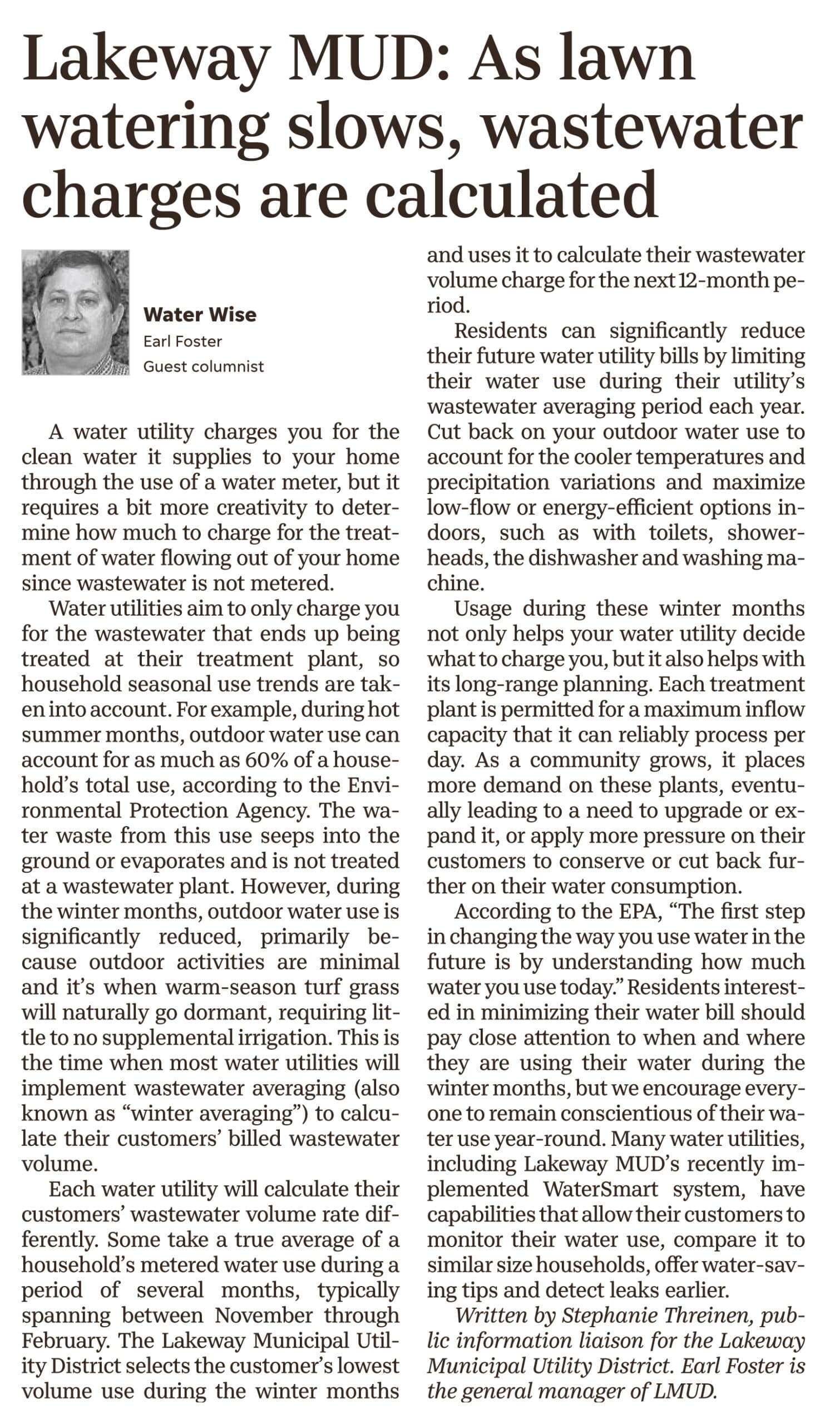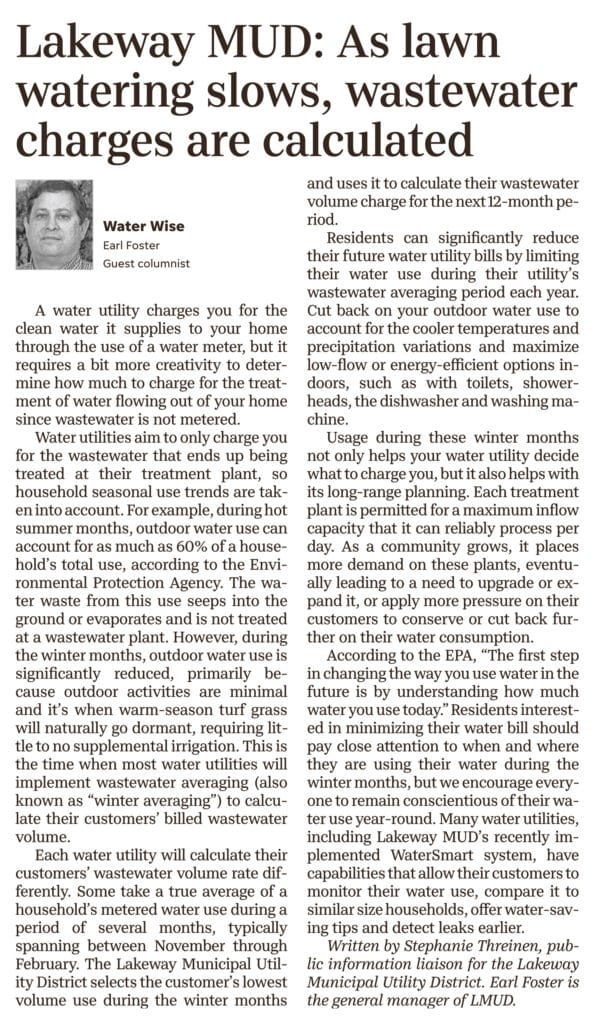As Lawn Watering Slows Down, Wastewater Charges are Calculated

As published in the Lake Travis View, November 2022.
Your water utility charges you for the clean water they supply to your home through the use of a water meter, but it requires a bit more creativity to determine how much to charge for the treatment of water flowing out of your home since wastewater is not metered.
Water utilities aim to only charge you for the wastewater that ends up being treated at their wastewater treatment plant, so household seasonal use trends are taken into account. For example, during hot summer months, outdoor water use can account for as much as 60 percent of a household’s total use, according to the Environmental Protection Agency (EPA). The water waste from this use seeps into the ground or evaporates and is not treated at a wastewater plant. However, during the winter months, outdoor water use is significantly reduced, primarily because outdoor activities are minimal and it’s when warm-season turf grass will naturally go dormant, requiring little to no supplemental irrigation. This is the time period when most water utilities will implement wastewater averaging (also known as “winter averaging”) to calculate their customers’ billed wastewater volume.
Each water utility will calculate their customers’ wastewater volume rate differently. Some take a true average of a household’s metered water use during a period of several months typically spanning between November through February. Lakeway MUD selects the customer’s lowest volume use during the winter months and uses it to calculate their wastewater volume charge for the next 12-month period.
Residents can significantly reduce their future water utility bills by limiting their water use during their utility’s wastewater averaging period each year. Cut back on your outdoor water use to account for the cooler temperatures and precipitation variations and maximize low-flow or energy-efficient options indoors, such as with toilets, showerheads, the dishwasher and washing machine.
Usage during these winter months not only helps your water utility decide what to charge you, but it also helps with their long-range planning. Each treatment plant is permitted for a maximum inflow capacity that it can reliably process per day. As a community grows, it places more demand on these plants, eventually leading to a need to upgrade or expand it…or apply more pressure on their customers to conserve or cut back further on their water consumption.
According to the EPA, “The first step in changing the way you use water in the future is by understanding how much water you use today.” Residents interested in minimizing their water bill pay close attention to when and where they are using their water during the winter months, but we encourage everyone to remain conscientious of their water use year round. Many water utilities, including Lakeway MUD’s recently implemented WaterSmart system, have capabilities that allow their customers to monitor their water use, compare it to similar size households, offer water-saving tips, and detect leaks earlier.
Written by Stephanie Threinen, public information liaison for the Lakeway Municipal Utility District (LMUD). Earl Foster is the general manager of LMUD.


 You are now being redirected to the WaterSmart page.
You are now being redirected to the WaterSmart page.